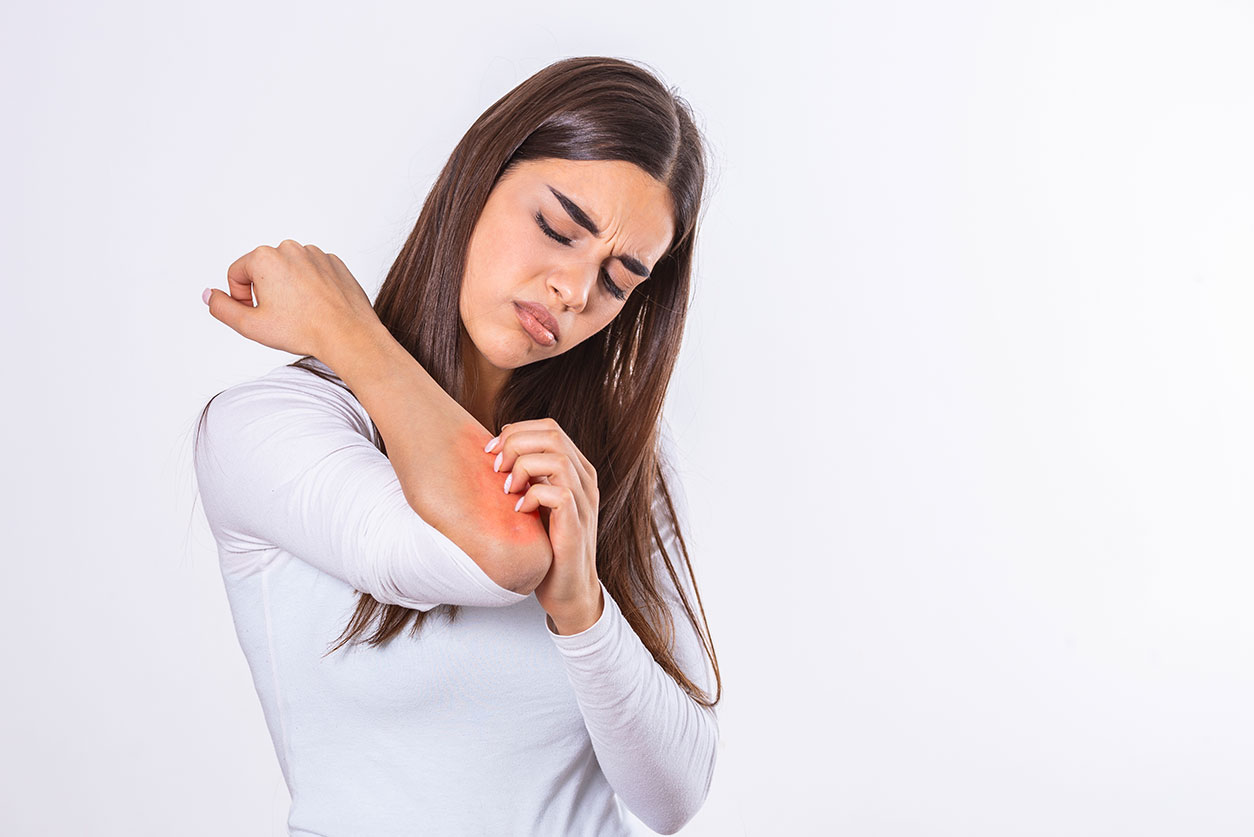Skin eruptions and red bumps are the first symptoms in case of insect bites or stings. Most commonly, mosquitoes, fleas, chiggers, bedbugs, ants, spiders, bees, wasps, and hornets are the insects that bite human beings.
What happens when insects bite or sting?
Very often insect bites or stings go unnoticed because they do not inflict pain or cause any other symptoms.
However, some insects inject venom or toxins into the skin during the bite, and this can trigger the immune system. This then results in an allergic reaction. The reaction may be mild to severe, depending on how sensitive a person is to the toxin or venom injected by the insect’s bite.
Signs and symptoms
After being bitten by an insect, a red lump on the surface of the skin appears. These lumps appear within minutes. This is the skin’s way of reacting to the bite and trying to neutralize the toxins.
Signs and symptoms of insect bites can vary depending on the type of insect and the genetic predisposition of the person stung or bitten.
In case of a severe reaction
Stings may be life-threatening to people who have severe allergies. This severe allergic reaction, which is called anaphylaxis, develops rapidly. The symptoms of anaphylactic reaction include itching, hives over large body surface area, difficulty breathing, cramps, and nausea.
In severe cases, a sudden decrease in blood pressure may result in shock and loss of consciousness. Anaphylaxis is a medical emergency and may be fatal.
If a person experiences any of these symptoms after an insect sting, that person should get emergency medical treatment immediately.
Treatment
Immediate care
Initial care for a person bitten by an insect involves:
- Go to a safer area to avoid more insect stings.
- Scrape or brush off the stinger with a straight-edged object. Do not try to pull out the stinger with tweezers or fingers because this may release more venom.
- Wash the area carefully with soap and water.
- Swab the site with disinfectant.
- To reduce pain and swelling, apply ice or a cold pack over the affected area.
- Apply 0.5% or 1% hydrocortisone cream, calamine lotion, or a baking soda paste to the bite or sting several times a day until the symptoms subside.
- Take an over-the-counter antihistamine to reduce any allergic reaction.
If the above measures do not reduce the severity of the insect bite or sting, the affected person should seek medical assistance.
Medication
Over-the-counter oral antihistamines are often used to treat itching. Non-prescription topical steroid drugs are given to reduce redness and soreness and to decrease itching. Follow directions on the package to ensure safe use of these medications.
In case of serious symptoms, stronger topical steroids or oral steroids are given. Injection of drugs may be needed to prevent or reduce symptoms of anaphylaxis.
A tetanus shot may be needed for some patients.
Contact us
In case of urgent medical care assistance, AfterOurs Urgent Care offers immediate telemedicine services, where medical providers are available to offer assistance. Anyone who experiences signs and symptoms requiring urgent medical attention can simply book their appointment with AfterOurs Urgent Care to directly talk to an expert. If your medical issue is not appropriate for telemedicine, we will let you know and refer you to an in-person facility.
When to visit a doctor:
If you are bitten by an insect and you have severe symptoms or symptoms that do not resolve, please consult a medical professional.
Treatment for insect bites and stings is available at AfterOurs Urgent Care.

